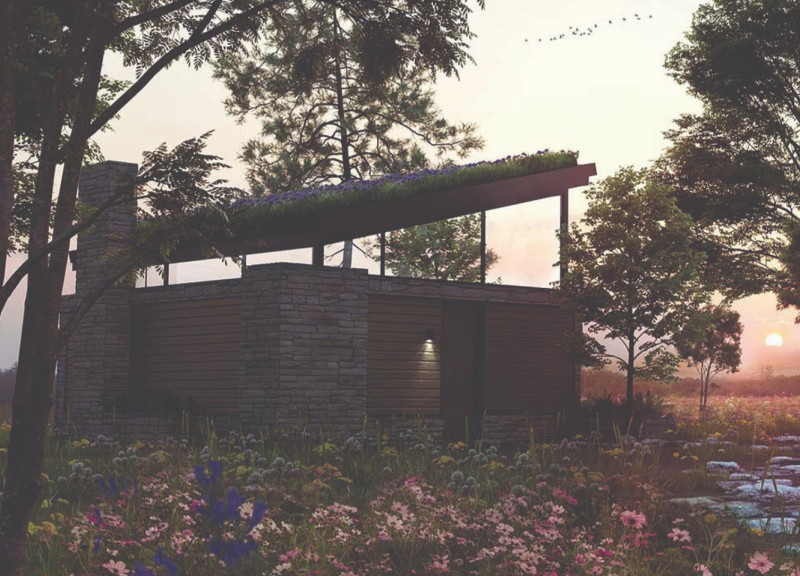5 key facts about this project
The Poet Wanderer is an architectural design project located in the tranquil landscape of Paviloita. It merges contemporary architecture with the natural environment, specifically designed to accommodate visitors looking for solitude and reflection. The project emphasizes a harmonious dialogue between constructed spaces and nature, facilitating exploration and contemplation through its layout and spatial organization.
The design incorporates a central communal building surrounded by individual poet huts. This configuration allows for both communal interaction and personal retreat. The architectural planning focuses on creating a journey through the landscape, where paths meander between structures, encouraging users to engage with their surroundings. The project is intended for a diverse range of users, from individuals seeking quiet reflection to groups celebrating communal experiences.
Sustainability and materiality are critical aspects of the project, where every material selection is purposeful and reflective of the overall design philosophy. The use of concrete block provides structural resilience, while wood adds warmth and connects the built environment to the surrounding nature. Large glass expanses are utilized to maximize natural light and views, effectively blurring the lines between indoor and outdoor spaces. Additionally, stone elements contribute to the rugged aesthetic, and energy-efficient thermal panels illustrate a commitment to environmental responsibility.
The unique arrangement of structures defines what sets this project apart from conventional designs. Unlike many developments that prioritize uniformity and denser layouts, The Poet Wanderer embodies spatial variability. Each poet hut has a distinct configuration, tailored to provide privacy while still maintaining a connection to the common area. The design effectively balances individual retreat and communal engagement, a critical aspect of human experience in architectural design.
The ecological landscaping plays an equally important role in the project. Native plants are integrated into the site layout, reinforcing local biodiversity while enhancing the overall aesthetic appeal. Outdoor spaces are not merely adjuncts to the buildings; they are intentional components that promote well-being and mindfulness through carefully designed gardens, meditation spaces, and exploration routes.
The Poet Wanderer reflects a modern approach to architecture, integrating traditional Latvian elements with innovative design practices. This synthesis enhances the sense of place while addressing contemporary needs for sustainability and community connectivity.
For further insights into the architectural plans, architectural sections, and detailed architectural designs of The Poet Wanderer, readers are encouraged to explore the full project presentation. Understanding the architectural ideas driving this project will provide valuable perspectives on its unique approach and design intentions.


























